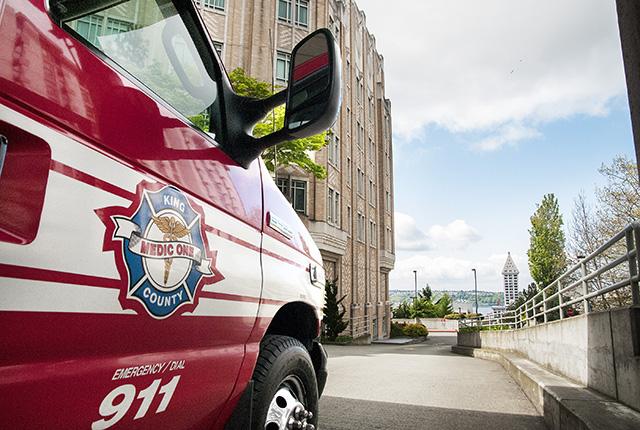
AI can benefit patient care — even on a budget
Providing artificial intelligence tools with the data they need takes time. How much time do first responders have to spare? 50 seconds.Artificial intelligence (AI) has the potential to become a powerful tool for predicting patients’ risk for developing different complications and conditions, allowing providers to provide optimal care.
But current AI programs require providers to enter large amounts of information about patients and their condition, often making them impractical for use in emergency and critical care situations, when providers have little time to collect and enter such data.
To address this problem, researchers at the University of Washington’s Paul G. Allen School of Computer Science & Engineering and School of Medicine have created a method to develop “cost-aware” AI (CoAI) programs that dramatically reduced the time, effort and resources required to predict patient outcomes and inform treatment decisions without sacrificing the accuracy of more cost-intensive tools. The paper was published April 7 in the journal Nature Biomedical Engineering.
“With sufficient data and the right parameters, AI models perform quite well when asked to predict clinical outcomes,” said senior author Gabriel Erion, who's combining an M.D. with a Ph.D. in computer science as part of the University of Washington’s Medical Scientist Training Program. “The cost, in terms of the time and effort required to collect that volume and variety of data, would be much too high in an ambulance or intensive care unit, for example, where every second counts and responders need to prioritize patient care.”
How much time do first-responders and intensive care unit providers say they have to spare when providing critical care? “Fifty seconds, said co-senior author and professor Su-In Lee, who leads the Allen School’s AIMS Lab focused on integrating AI and the biomedical sciences. "That’s how long first responders told us they can spare to score patient risk factors when they are in the midst of performing a life-saving intervention.”
AIMS Lab researchers teamed up with clinicians at the UW School of Medicine and first responders with Airlift Northwest, American Medical Response and the Seattle Fire Department to validate the CoAI approach. In a series of experiments, the researchers evaluated CoAI’s performance compared to typical AI models in predicting the increased bleeding risk of trauma patients en route to the hospital and the in-hospital mortality risk of critical care patients in the ICU.
They also surveyed first responders and nurses to understand how patient risk scoring works in practice — hence the 50-second rule. In the case of trauma response, their experiments showed that CoAI dramatically reduces the cost of data acquisition — by around 90% — while still achieving levels of accuracy comparable to other, more cost-intensive approaches. They achieved similar results for the inpatient critical care setting.
“CoAI deals with this constraint by prioritizing a subset of features to gather while achieving the same or better accuracy in its predictions as other, less cost-aware models. And it is generalizable to a variety of care settings, such as cancer screening, where different feature costs come into play — including financial considerations,” Lee said.
Co-senior author Dr. Nathan White, associate professor of Emergency Medicine at the UW School of Medicine, said that these results speak to what is possible when researchers break down barriers between disciplines and prioritize how new technologies will be put to real-world use.
“A key contributor to the success of this project included the great synergy afforded by working across traditional silos of medicine and engineering,” said White. “AI is an important component of healthcare today, but we must always be aware of the clinical situations where AI is being used and seek out input from frontline healthcare workers involved directly in patient care. This will ensure that AI is always working optimally for the patients it intends to benefit.”
Read the paper in Nature Biomedical Engineering.
Adapted from an article written by Kristin Osborne.
For details about UW Medicine, please visit https://uwmedicine.org/about.
